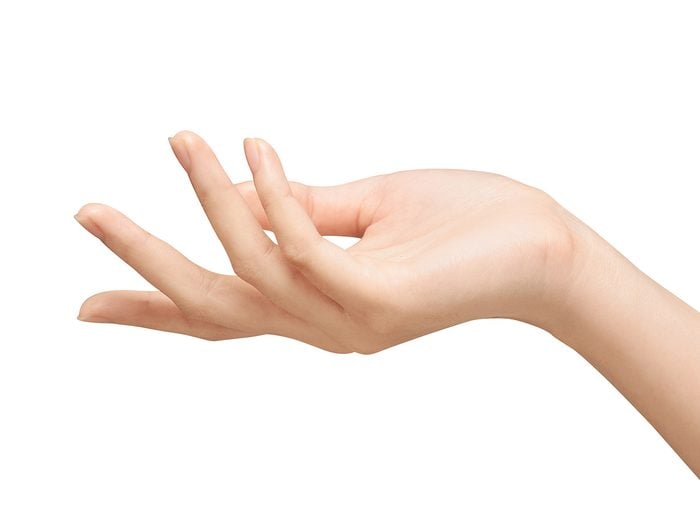
Finger length reveals: Arthritis risk
Women with ring fingers that are longer than their index fingers, typically a male trait, are twice as likely to have osteoarthritis in the knees, according to an Arthritis & Rheumatism study. Low estrogen levels may be a factor. The same finger feature has been linked to higher athletic ability and verbal aggression in both genders. In men, a longer ring finger (indicating an in-utero testosterone surge during the second trimester) is associated with having more children and better relationships with women, but a British Journal of Cancer study found a connection to a higher risk of prostate cancer.
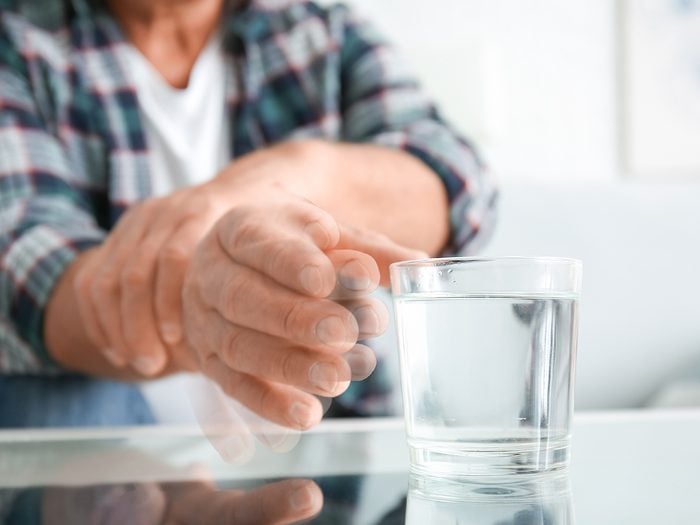
Shaky hands reveal: Parkinson’s disease
Trembling hands could be the result of something as simple as too much caffeine or a side effect of certain medications like asthma drugs and antidepressants. But it’s a good idea to see your doctor if the issue recurs. A tremor in just one hand can be the first symptom of Parkinson’s disease (about 80 per cent of people with Parkinson’s have a tremor), or it can indicate essential tremor, a disorder that causes uncontrollable shaking and is treatable with therapy or medication.
Learn to spot more early symptoms of Parkinson’s.
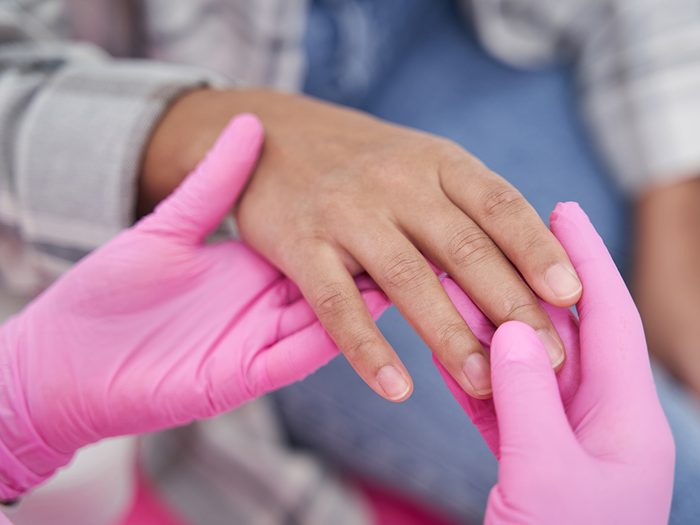
Nail colour reveals: Kidney disease
When researchers studied 100 patients with chronic kidney disease, they found that 36 per cent had half-and-half nails, when the bottom of a nail is white and the top is brown. The nail condition may be caused by an increased concentration of certain hormones and chronic anemia, both traits of chronic kidney disease. See your doctor right away if you notice half-and-half nails or a dark, vertical stripe beneath the nail bed. This can be hidden melanoma, a skin cancer.
Here’s what it could mean if you have white spots on your nails.
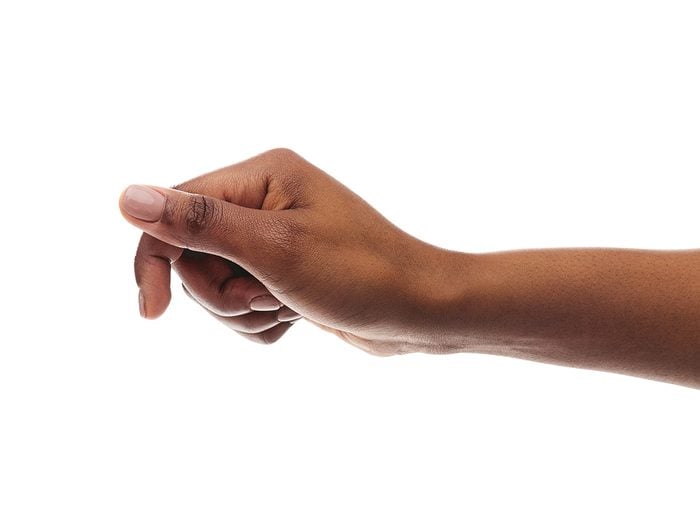
Grip strength reveals: Heart health
A weak grip predicts a higher risk of heart attack or stroke and lower chances of survival, according to a Lancet study of nearly 140,000 adults in 17 countries. Grip strength was a better predictor of death than was blood pressure. Researchers say grip strength is a marker of overall muscle strength and fitness, and they recommend whole-body strength training and aerobic exercise to reduce heart disease risk.
Find out which heart attack symptoms are often misdiagnosed.
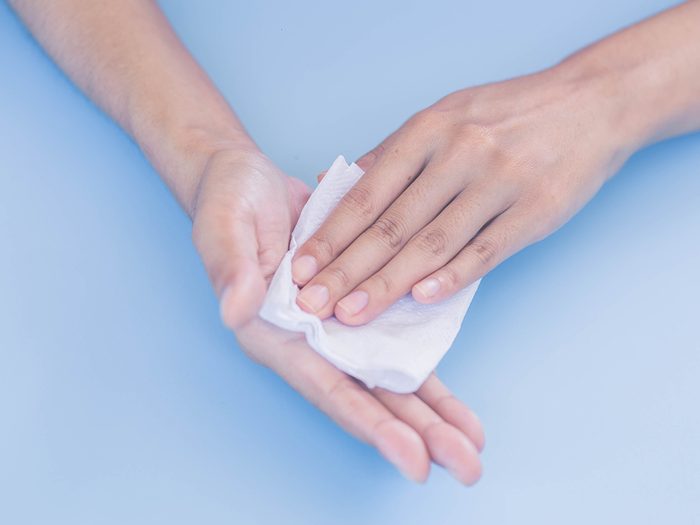
Sweaty palms reveal: Hyperhidrosis
Overly clammy hands may be a symptom of menopause or thyroid conditions, as well as hyperhidrosis, in which overactive sweat glands cause far more perspiration than necessary. Most people with the condition sweat from only one or two parts of the body, such as the armpits, palms, or feet. A doctor may prescribe a strong antiperspirant to decrease sweat production.
Here are 20 symptoms you should never ignore.
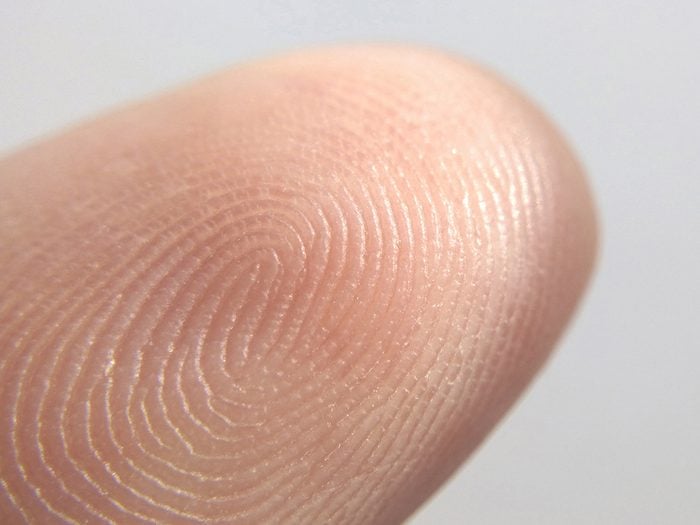
Fingerprints reveal: High blood pressure
When British researchers studied 139 fingerprints, they found that people with a whorl (spiral) pattern on one or more fingers were more likely to have high blood pressure than people with arches or loops. The more fingers with whorls a participant had, the higher his or her blood pressure was. Another study of 500 subjects found a similar connection between fingerprint patterns and high blood pressure. Fingertip whorls are markers of fetal development problems during certain stages of pregnancy, which may affect blood pressure later in life.
Don’t miss these natural remedies for high blood pressure.

Pale hands reveal: Anemia
There are many different forms of anemia including acute and chronic anemia which are linked to other health issues such as sickle cell disease and hypothyroidism. All forms, however, occur when a person doesn’t have enough healthy blood cells to carry oxygen throughout the body. Thus, common anemia symptoms are pale skin, especially hand skin, and pale nail beds, the American Society of Hematology reports.
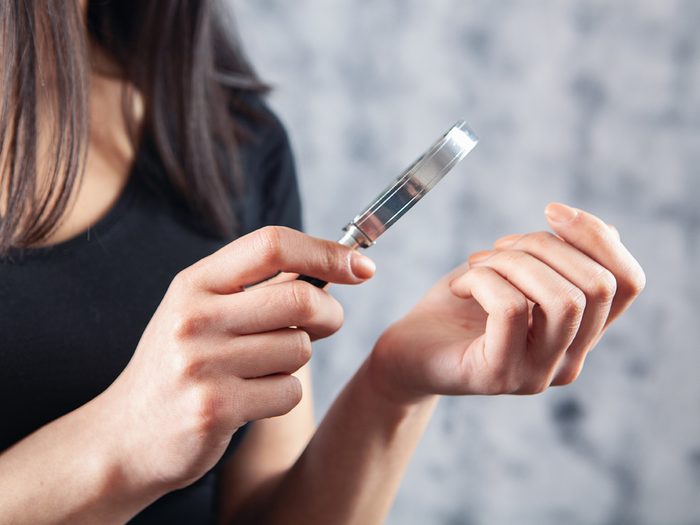
Clubbed nails reveal: Lung disease
Clubbed nails, that that curve down and have a large or bulging end of the finger, are associated with a number of different diseases. One is lung disease since clubbed fingers or nails could be caused by low oxygen in the blood, according to the Mayo Clinic. Nail clubbing is also linked to inflammatory bowel disease, cardiovascular disease, liver disease, and AIDS.
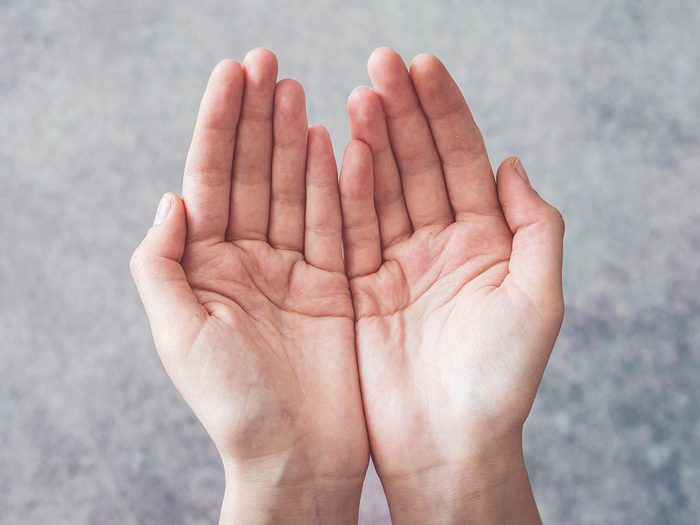
Blotchy, red palms reveal: Liver disease
Palmar erythema causes blotchy, red hands—a secondary symptom that could point to various diseases. According to the American Journal of Clinical Dermatology, one health issue this symptom is linked to is liver diseases and 23 per cent of those with liver cirrhosis develop palmar erythema. Some people might also experience slightly warmer hands from this condition as well.
Here’s what it could mean if your hands are always cold.

Swollen knuckles reveal: High cholesterol
Hard, yellow bumps over the knuckles could be a sign of a genetic high cholesterol condition called familial hypercholesterolemia or FH. Xanthomas, or fat deposits found in the tendons, lump together in the hands, elbows, or knees, according to the FH Foundation.
Next, find out the signs of disease that are written all over your face.